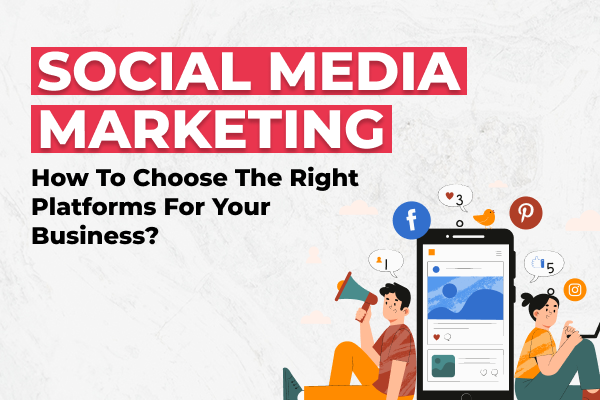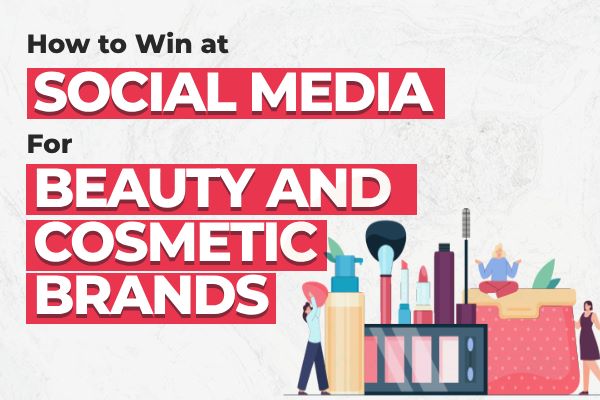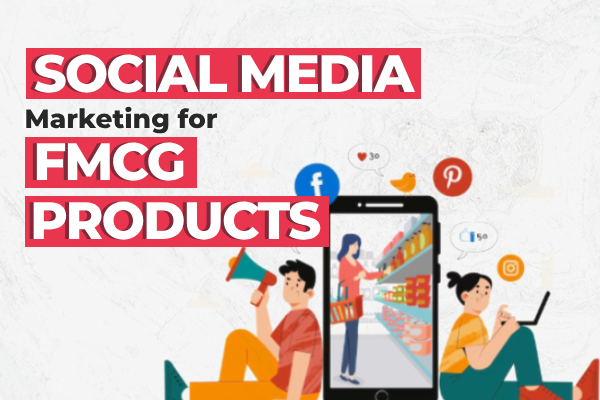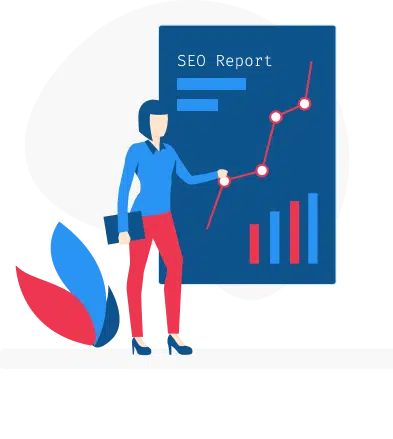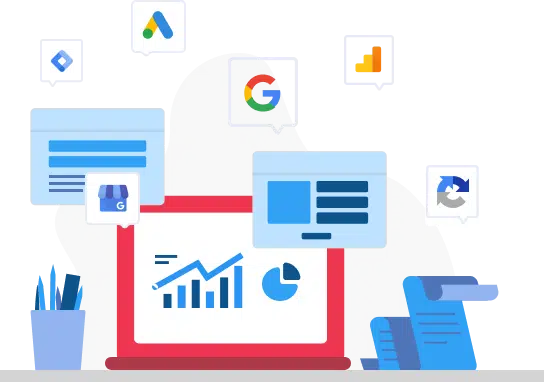Content
- Introduction
- 1. Gen AI for Content Creation
- 2. Trendjacking is Out, Mindful Marketing Is In
- 3. Social Commerce: The 24/7 Shopping Mall
- 4. Short-Form Video is Still the King
- 5. Nano and Micro-Influencers are Taking Over
- 6. Social Listening: It’s Not Just About Eavesdropping Anymore
- 7. AI Customer Service: Your 24/7 Support Squad
- 8. Community Building: Your Tribe is Your Vibe
- 9. Social Media: The New Search Engine
- 10. User-Generated Content: The Ultimate Social Proof
- Conquer the Social Media Game in 2025
Introduction
How is social media changing in 2025?
The new year is almost here, and you might be looking for the latest social media marketing trends.
And, why wouldn’t you?
94.5% of internet users all around the world are users of at least one social media platform.
But, forget everything you thought you knew about social media marketing. 2025 is here, and it’s brought a whole new wave of trends that are reshaping the digital landscape.
Let’s dive deep into the top 10 social media marketing trends for 2025.
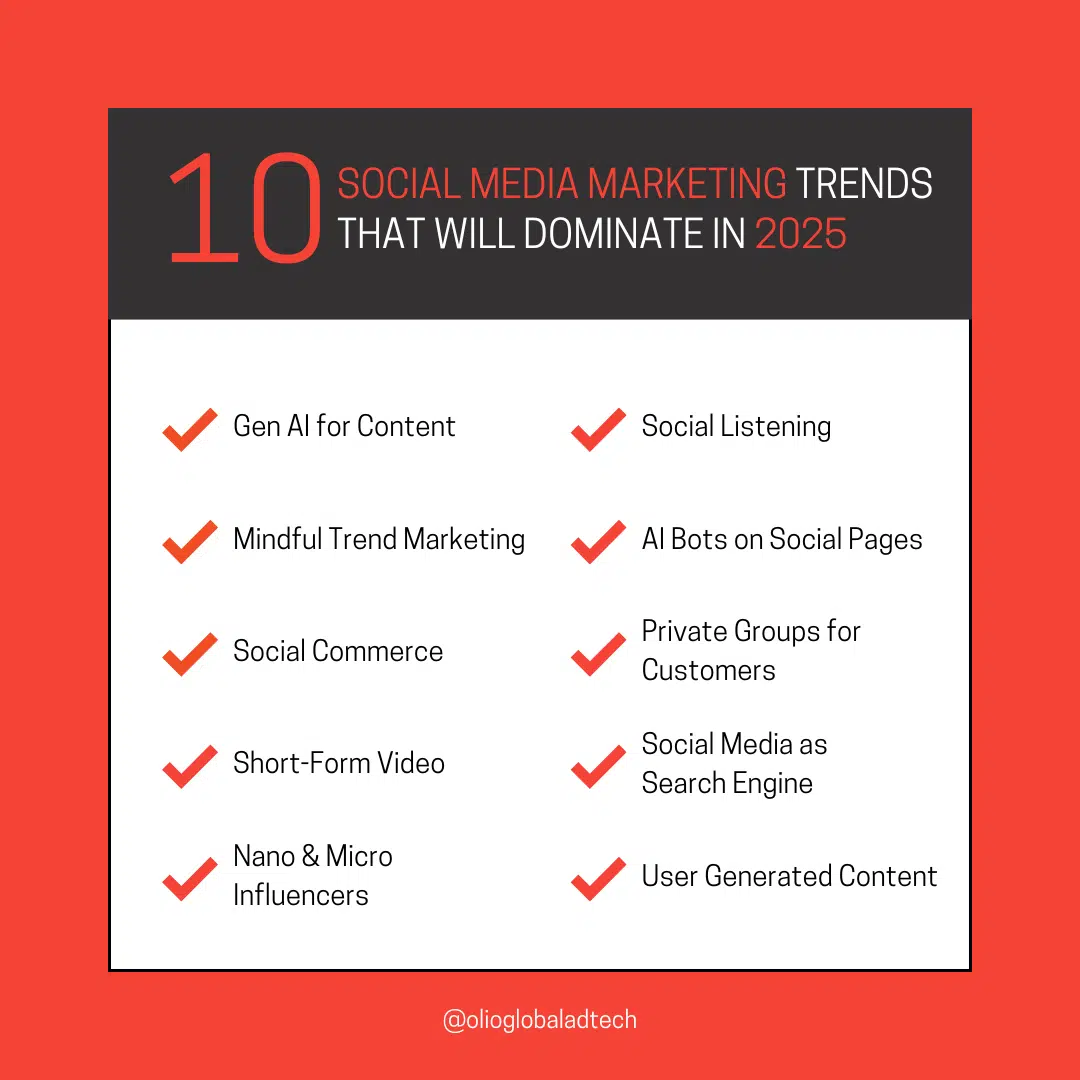
1. Gen AI for Content Creation
Okay, let’s be real, we all know AI is here to stay. You’ve probably already used ChatGPT to write a catchy caption or two (no judgment!).
But hold on tight, because generative AI is about to get a whole lot more powerful in 2025.
Gen AI tools, like ChatGPT, DALL-E, and Adobe Firefly, are helping marketers execute their strategies at warp speed by dynamically generating posts, visuals, and videos with the target audience in focus.
Imagine serving ads so precisely targeted that they feel like you’re reading your audience’s minds.
AI can analyze user data to deliver content that truly resonates, leading to higher engagement and conversions.
If you’re suffering from creative block, Generative AI tools can help you brainstorm fresh ideas, and experiment with new formats.
2. Trendjacking is Out, Mindful Marketing Is In
Remember that time everyone was doing the ice bucket challenge? That’s trendjacking in a nutshell.
Brands used to simply jump on the latest social media trends. They weren’t thinking thoroughly, whether it would be able to connect with the target audience or not.
This “trend” of jumping on viral trends saw a sharp decline in 2024. Still, a lot of businesses haven’t adjusted their sails to the wind!
People are smart. They can sniff out “marketing” from a mile away. If you’re jumping on a trend just for the clout, it’ll backfire.
Instead, focus on trends that genuinely align with your brand and resonate with your audience.
When you participate in trends that reflect your values, you build trust with your audience. So, take the time to understand your audience and what matters to them.
Mindful trend adoption is about playing the long game. It’s about creating long-lasting relationships, not chasing short-lived viral fame.
Let’s consider a sustainable clothing brand practicing mindful trend marketing.
A sustainable clothing brand can create engaging posts and blogposts about eco-friendly fashion choices to join the conversation about environmental awareness. This also aligns with their core values and business practices.
As a result, the audience will find them genuine and connect with the brand.
Mindful marketing should be the base of all your social media marketing strategies for 2025.
3. Social Commerce: The 24/7 Shopping Mall
Instagram, Tiktok, and Pinterest have transformed into the marketing and sales channels for businesses. This is called social commerce – attracting, engaging, and converting customers on social media.
Your most successful competitors have embraced social commerce to gain more business.
People have become accustomed to convenience and dislike the hassle of switching to a shopping app after seeing a product on social media.
In short, successful brands are aligning their social media strategies with people’s desire for convenience and engaging content.
With social commerce, people are making their buying decisions on live chats and influencer marketing (more on this later!).
And guess what? This isn’t just a fleeting trend.
Social commerce is exploding! In 2024, social commerce revenue soared a whopping 23% higher than the previous year.
To put that in perspective, back in 2018, social commerce only accounted for about 5.5% of all e-commerce sales. With a steady rise, it was 18.5% in 2023, and experts predict it’ll hit 21.7% by 2028. (source: Statista).
Here’s a use case that will help you visualize the potential of social commerce:
Let’s say a beauty brand hosts a live shopping event on Instagram.
The live show features a celebrity makeup artist who demonstrates products and answers questions in real-time. Viewers can purchase the featured products with a single click.
Genius, right?
Add social commerce in the list of digital marketing trends on which you need to brainstorm in 2025.
4. Short-Form Video is Still the King
TikTok, Instagram Reels, YouTube Shorts, and other short-form video content draw 90% of internet traffic.
According to a study by Firework, short-form video content boasts 2.5 times more engagement and 50% more viewer retention than long-form videos.
Why has the short video format seen such success? The short and simple answer is, “Our attention spans are shorter than ever (thanks, internet!).”
Short, snappy videos are the perfect way to capture attention and deliver your message quickly.
Plus, they’re incredibly versatile.
You can use shorts/reels for everything from product demos to behind-the-scenes glimpses and funny skits.
Here’s the deal:
- Invest in video: If you’re not creating short-form videos, you’re missing out. Get creative and experiment with different formats. [You can also take help of a digital marketing agency to plan and execute your video marketing campaigns.]
- Use AI for video editing: AI tools can help you edit videos faster and create more engaging content. Popular video editing platforms like Adobe Premiere Pro and Canva now offer this feature.
- Tell a story: Learn the art of compelling storytelling in 30-120 seconds. The aim is to connect with the audience at an emotional level.
For example, if you sell tour packages, you can use Instagram Reels or TikTok videos in various ways, such as:
- Showcase breathtaking destinations
- Offer Quick Travel Tips
- Connect emotionally (and sometimes even spiritually) with the audience to entice their wanderlust
Short-form video content tops the list of the latest social media marketing trends. Don’t lag behind your competitors, since 56% of all business videos today are under 120 seconds.
5. Nano and Micro-Influencers are Taking Over
Forget those mega-influencers and celebrities with millions of followers and sky-high price tags.
Businesses and marketers have been using influencers marketing for a few years now. In fact, 36% of marketers say influencer content outperforms brand-created content when it comes to grabbing attention on social media.
The trend has now moved to nano and micro-influencers.
Nano-influencers (1,000–10,000 followers) and micro-influencers (10,000–100,000 followers) have smaller but highly engaged audiences.
As per the Marketing Benchmark Report 2024, here’s what marketers prefer.
| Influencer Type | % of Marketers Who Prefer Them |
|---|---|
| Macro-Influencers/Celebrities (Millions of Followers) |
13% |
| Micro-Influencers (10,000–100,000 followers) |
26% |
| Nano-Influencers (1,000–10,000 followers) |
44% |
If you’re thinking that budget constraints are the sole reason for these preferences, you’re only partly right!
Of course, budget is a factor! When you have to spend money on ad campaigns and other digital marketing efforts, you might not want to allocate a huge chunk to influencers.
However, the main reason is niche targeting!
Marketers have observed that the followers of micro and nano-influencers trust their recommendations.
It’s not the same with the big shots.
People usually catch the whiff of paid-promotion and don’t take their endorsements very seriously.
For instance, if you opened a coffee shop, wouldn’t you rather team up with that local food guide on Instagram?
And get this: micro-influencers on Instagram see an average engagement rate of 3.86%, while mega-influencers lag behind at just 1.21%.
For example, imagine you have an e-commerce store selling customized gift items.
Micro-influencers (who provide gift ideas on Reels or TikTok) can showcase your products and generate genuine excitement. People trust their ideas, and you’ve got customers who are eager to buy!
Similarly, many niche-specific micro and nano-influencers specialize in areas like lifestyle, book recommendations, health and wellness, and more.
Here’s what you need to do in 2025:
- Find your tribe: Identify influencers who are already connecting with your target audience.
- Collaborate and conquer: Don’t put all your eggs in one basket. Partner with multiple micro-influencers to expand your reach and increase engagement.
6. Social Listening: It’s Not Just About Eavesdropping Anymore
Social listening is the practice of analyzing a brand’s social media engagement at a deeper level. It helps brands understand their target audience, predict trends, and stay ahead of the curve.
Why is social listening such a significant digital marketing trend?
Because things change rapidly in the world of social media. A trend that’s hot now might be outdated in a couple of months!
But, what if you can track conversations, identify emerging trends before they get viral, and get real time feedback on your campaigns!
Here are the six steps of social listening process:
Set Clear Objectives
- Define what you want to achieve: Is it brand monitoring, competitor analysis, customer feedback, or trend spotting?
- Example: Track sentiment around your latest product launch or identify trending topics in your industry.
Choose the Right Tools
- Select social listening tools like Hootsuite, Brandwatch, or Sprout Social.
- Ensure the tool aligns with your goals and covers your target platforms (e.g., Instagram, Twitter, LinkedIn).
Identify Keywords and Topics
- Pinpoint relevant keywords, hashtags, or topics: brand name, competitors, industry terms, and trending phrases.
- Example: For a fashion brand, monitor keywords like “sustainable fashion” or hashtags like #OOTD.
Collect and Analyze Data
- Aggregate mentions, sentiment, and engagement metrics from social media, forums, blogs, and news sites.
- Categorize insights into positive, negative, or neutral feedback to understand public perception.
Take Action Based on Insights
- Use findings to optimize marketing strategies, enhance customer service, or address PR crises.
- Example: If a customer tweets about a poor experience, respond promptly to resolve the issue.
Evaluate and Refine Your Strategy
- Regularly evaluate and analyze the impact of your marketing and social listening efforts.
- Refine your keywords, expand data sources, or adjust goals based on changing trends and business needs.
Social listening tools do exactly that for you! Some of the popular tools are: Sprout Social, Hootsuite, Brand24, and BuzzSumo, among others.
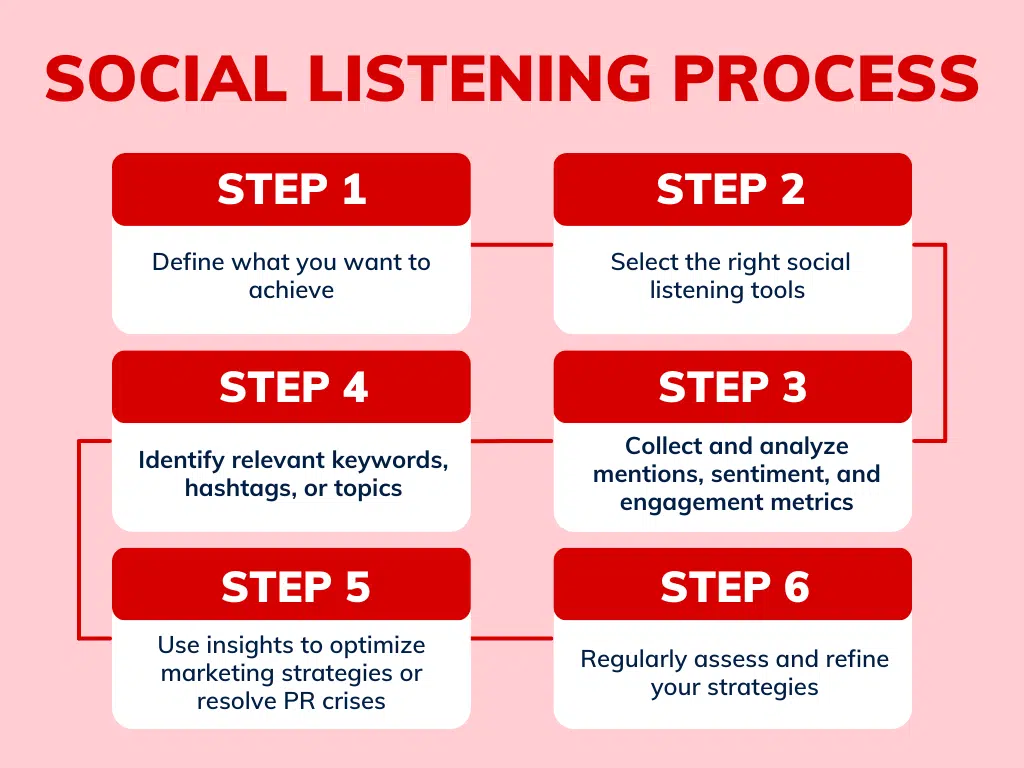
7. AI Customer Service: Your 24/7 Support Squad
In the early days of chatbots, customers often requested to be connected with a human agent. Bots weren’t sophisticated enough to understand the nuances of customer interaction.
But now, things have changed!
Chatbots and virtual assistants are becoming increasingly sophisticated, offering instant support and personalized solutions.
In fact, did you know there are over 100,000 active chatbots on Facebook Messenger alone?
When customers are stressed about a late delivery, they want instant answers, even if it’s 6 in the morning.
AI chatbots can handle a high volume of inquiries, providing 24/7 support. Additionally, this gives time to your human team to focus on more complex issues.
Moreover, AI is getting better at understanding natural language and providing empathetic responses.
Take, for example, an online retailer that uses a chatbot on their Facebook page to:
- Answer frequently asked questions
- Help the customer to track orders
- Offer personalized product recommendations
With the bot, the retail brand can offer instant answers to their customers, 24/7.
8. Community Building: Your Tribe is Your Vibe
Forget broadcasting to the masses. In 2025, it’s all about building tight-knit communities around your brand.
Social media communities include Facebook groups, Discord servers, and exclusive online forums (on Reddit, etc.).
Here’s how to do it right:
- Create a sense of exclusivity: Offer exclusive content, events, and perks to your community members.
- Foster meaningful interactions: Encourage discussions, provide valuable content, and be an active participant in your community.
- Cultivate brand advocates: Your community can become a powerful source of word-of-mouth marketing and brand advocacy.
Here is an example:
A fitness brand creates a private Facebook group where members can:
- Share workout tips
- Participate in fun challenges
- Connect with certified trainers
This group becomes a safe and supportive ecosystem that keeps members engaged and coming back for more.
Also Read: Digital Media Strategies for Fitness Centers.
9. Social Media: The New Search Engine
Search Engine Optimization (SEO) has evolved into Search Everywhere Optimization because people aren’t searching only on traditional search engines like Google or Bing.
Today, social media is a go-to search engine for many, especially GenZ.
People are turning to platforms like TikTok and Instagram to discover products, find inspiration, and stay up-to-date on trends.
Why the shift? Because social media offers a more visual and engaging search experience. Plus, the algorithms are getting more intelligent at recommending relevant content.
Here’s what you need to know:
- Optimize for social search: Use relevant keywords and hashtags in your posts to improve your visibility in social media searches.
- Create eye-catching visuals: High-quality images and videos are essential for attracting attention in social media searches.
- Embrace the power of recommendations: Social media algorithms prioritize content that is engaging and shareable.
Real-world example: A local bakery uses Instagram hashtags like #abudhabibakery #freshbaked #artisanbread to appear in local searches and attract new customers.
10. User-Generated Content: The Ultimate Social Proof
You’re more likely to trust a brand if you see a real person (not an influencer, in this case) sharing a positive experience with it on social media. This person could be a genuine customer or fan of the brand.
Online posts and blogposts created by a customer or a fan of a brand are called “user-generated content,” or UGC.
UGC will be among the top social media marketing strategies for 2025.
Why is UGC so effective? Because it’s authentic and relatable. It shows potential customers that real people are enjoying your products or services.
Brands can nudge people to post about them in many different ways.
For example, a travel agency could encourage its customers to share photos of their vacations using a branded hashtag.
The agency can then feature these photos on its Instagram profile. This will attract others who are influenced by the genuine experiences of real people.
Here are some ways to leverage user-generated content for marketing
- Encourage content creation: Run contests, offer incentives, and make it easy for your customers to share their experiences.
- Showcase UGC across your channels: Feature user-generated content on your website, social media profiles, and email marketing campaigns.
- Build a community around UGC: Create a hashtag or social media group where customers can share their content and connect with each other.
Conquer the Social Media Game in 2025
Staying on top of these latest social media marketing trends is KEY to crushing the marketing game in 2025.
In summary, these trends are all about augmenting your natural capabilities with AI, leveraging the power of more commercialized social media, and most importantly, humanizing social connections.
Feeling overwhelmed? Olio Global’s digital marketing services can help you navigate it all.
Contact us today to book a FREE consultation session on social media strategies!
Frequently Ask Questions
How can AI help with my social media marketing?
AI tools like ChatGPT are revolutionizing social media marketing. They can generate engaging content, personalize marketing strategies, and even provide 24/7 customer support through chatbots.
Gen AI and Chatbots enable businesses to save time, boost creativity, and enhance customer satisfaction.
How can I measure the ROI of my social commerce campaigns?
To measure the return on the investment on your social commerce campaigns, track key metrics like conversion rates, click-through rates, customer lifetime value, etc.
Furthermore, use platform-specific analytics and social listening tools to understand how your audience interacts with your shoppable content and identify areas for improvement.
Beyond Instagram and TikTok, which platforms should I consider for short-form video in 2025?
While TikTok and Instagram Reels are dominant, explore emerging platforms like YouTube Shorts, Pinterest Idea Pins, and even LinkedIn Stories.
Here’s a tip: Experiment with different formats and tailor your content to each platform’s unique audience.
What are some common mistakes businesses make with social listening?
The common mistakes that businesses make with social listening are that they often focus solely on mentions and volume, missing out on valuable insights.
In other words, don’t just track numbers; analyze sentiment, identify key themes, and use the data to inform your overall social media strategy.
How can I encourage my audience to create more user-generated content?
To encourage people to create more user-generated content (UGC), make it fun and easy!
For example, you can run contests, offer incentives, and provide clear guidelines for creating and sharing content.
Also, feature UGC prominently on your channels and actively engage with those who participate.


